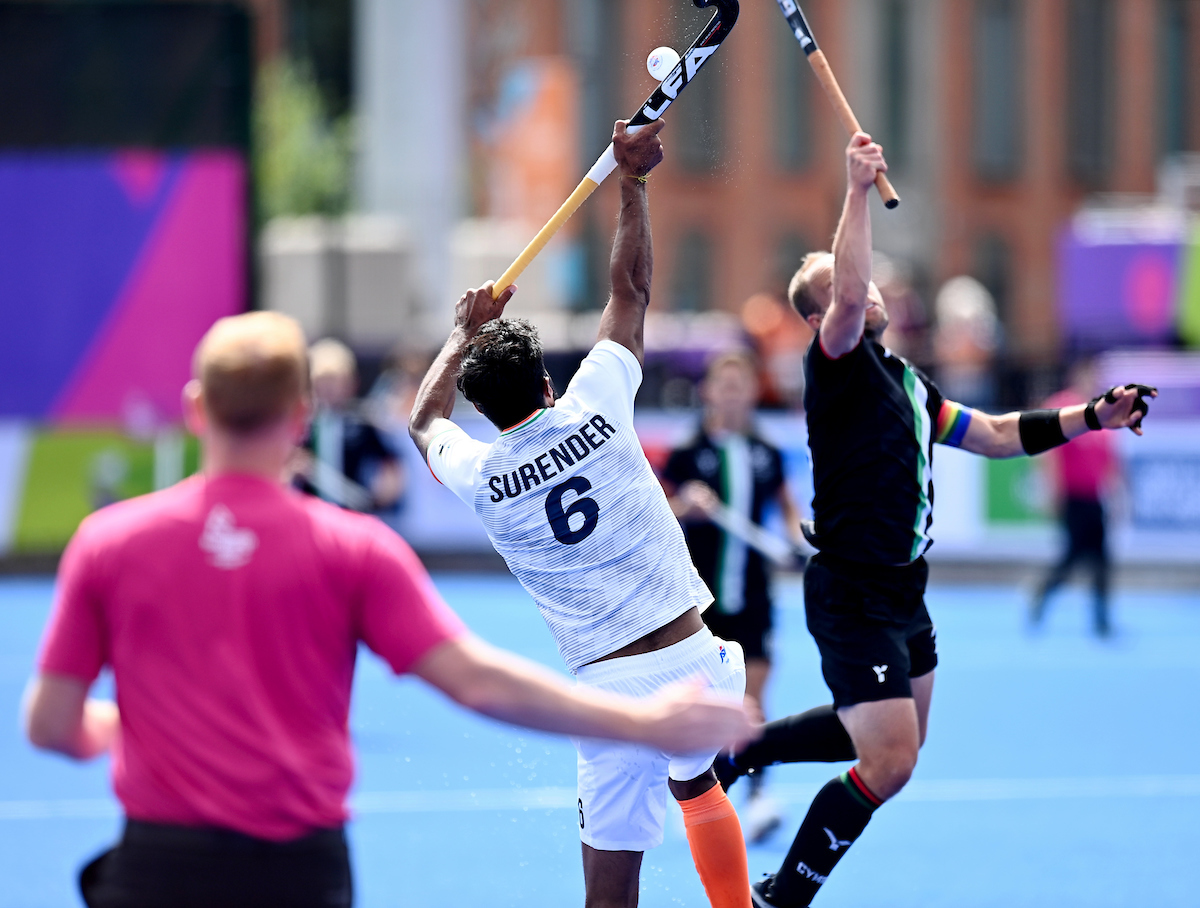Whenever the FIH conducts calls with top coaches, the aerial is the “hot topic” of conversation. The briefings’ book is updated after every tournament with a phalanx of slides and video clips. A third of those are aerial-ball related, with the FIH fielding question and queries around the interpretation of the ruling.
There have been almost weekly discussions with coaches and umpires at Premier Division as both parties get up to speed with how players are using the growing skill, as well as how officials are adapting to the increasing use. Meanwhile, below elite level, the ruling is somewhat of a minefield.
“The amount of aerial is stratospheric compared to five years ago and more,” says Jon Wyatt, the world governing body’s sports director.
Continue reading...

Unlock our ad-free, premium content and get use of our subscriber-only app. Use coupon 3FOR1 to get 3 months for only £1!
Already a subscriber to our website? Login





It’s not hard. Umpires should be rewarded for blowing this really simple decision right… if you blow it early there is seldom a conversation, too many people feel the need to delay the whistle and try and create a decision… that ruins games. An early whistle, consistently, allows team to throw in to space and attack at osve
Not sure I’d agree. The higher we go, the better this is done and therefore a quick whistle may well be a poor decision. You will frustrate good teams who do it well AND SAFELY and that will bleed into the rest of your and their game. Properly interpreted, it works well with teams of a decent skill level and above. But yes it is sometimes poorly understood and poorly applied.
There are two questions here. Firstly is it desirable for the game to have the aerial ball thrown over distance or does it reduce overall involvement of players and detract from passing and tactical aspects of the game played on the ground? Different people will have radically different views about the skill/tactics trade-offs.
Whatever one’s view, it seems likely that the genie is mostly if not entirely out of the bottle.
So the second question becomes the focus. How do we deal with the contest for the ball when it reaches its destination. It seems to me that the current ‘receiver gets five yards’ is unsatisfactory. It seems counter intuitive that a player receiving an aerial pass should receive that type of protection when that is not the case for other passes. My anecdotal experience of watching hockey with non hockey or lapsed hockey players is that it looks bizarre, especially in the D.
So the balance is between ensuring competition and achieving safety. Personally I prefer to favour competition, so I would do away with the 5 yard protection. But if people feel that facial injuries would inevitably follow (probably correctly) then I prefer the previous interpretation of giving priority to the receiver on the team that has not put the ball in the air where there is any doubt over safe receipt.
Would like to see a trial rule where the ball cannot be raised intentionally over knee height except for a shot at goal. Would remove current lather over aerials and promote skill on the ground – which is big point of difference for hockey over football.
I completely agree!
3D hockey is a great advance but neither the rules nor many hockey people ( including some umpires) have yet caught up with it. Self pass is an even bigger improvement to the game BUT the present long corner is a nonsense a restart 23 metres from where the ball left the pitch!!!
Interesting that in football the equivalent of this aspect is viewed negatively as ‘route one’ favoured by less skilled teams. Not quite the same for hockey, many teams use it well and outside the circle there is rarely a major issue because the consequences are reduced. My view is that the aerial into the circle should be outlawed, the circle is usually most congested and a player should not be able to gain from the five yard rule which is there for safety. A goalkeeper coming for an aerial could have a stroke and card awarded, which is nonsensical. Make a ruling that the ball cannot enter the circle above shoulder height, by definition most balls between knee and shoulder would also be dangerous but it would allow a safely lifted ball into genuine space in the circle.